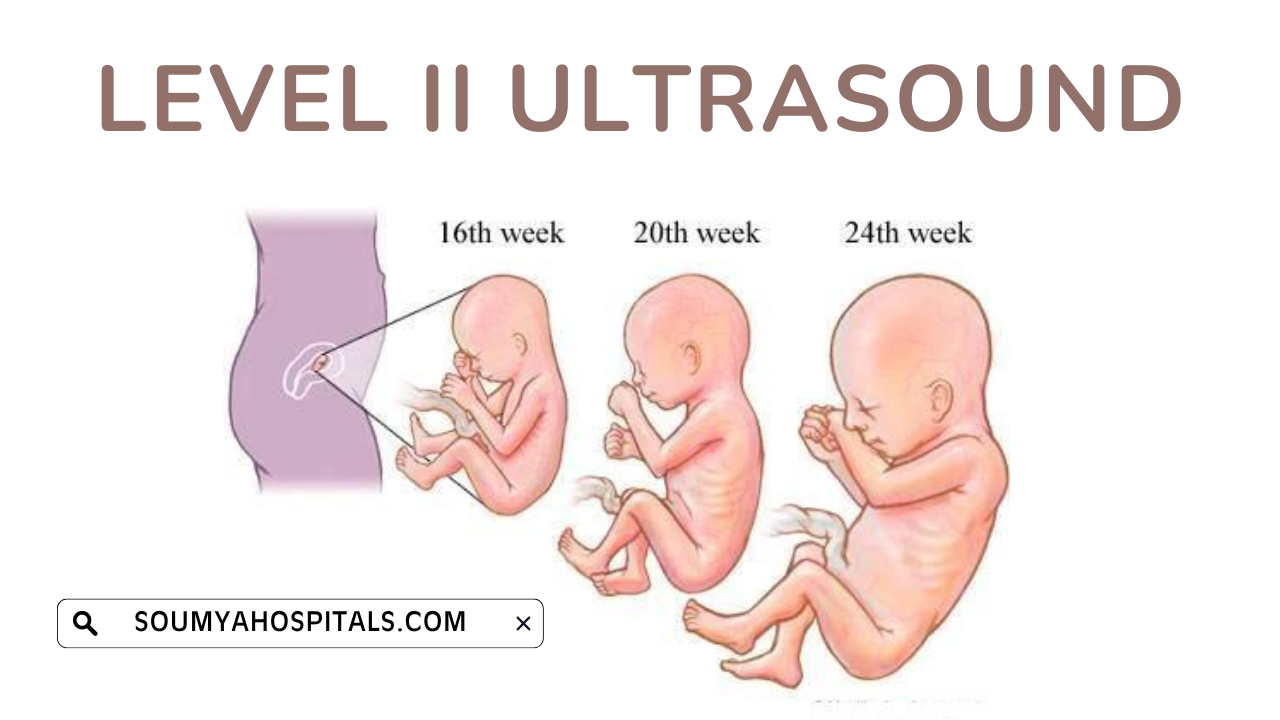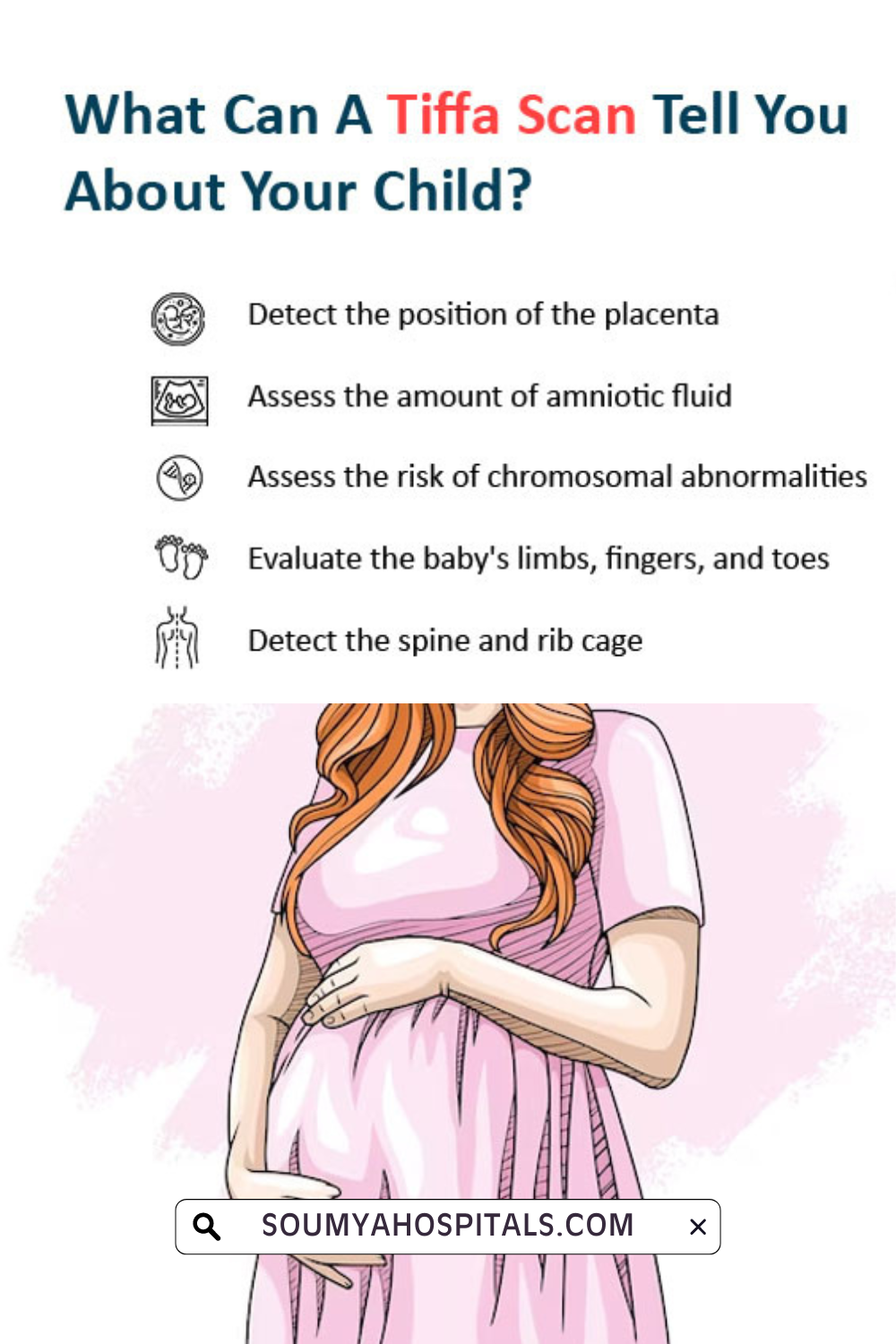Important Tests during pregnancy help check the baby's growth and health, as well as the mother's well-being.
Anatomy scan is also called level 2 ultrasound. It is a prenatal ultrasound performed between 18 and 22 weeks of pregnancy. It checks on the physical development of the fetus and can detect few congenital disorders along with major anatomical disorders.
The healthcare providers use 2D, 3D or 4D ultrasound scans to take images of the fetus inside your uterus. The sonographer will make a note of fetus measurements and make sure the fetus is growing appropriately for its age. You can even know the sex of the fetus at this scan.
- Brief About Level II Ultrasound
- What is Anatomy Scan (Level 2 Ultrasound) Look For?
- Interesting Facts About Level 2 Ultrasound During Pregnancy
- What to Expect During the TIFFA Scan?
- Potential Findings of 20-week Ultrasound
- What do they do at an anatomy scan?
- How many anatomy scans needed during pregnancy?
- Can I eat before an anatomy scan?
Brief About Level II Ultrasound
USG Level 2 Ultrasound is also known as fetal anatomical survey. It is recommended for almost all pregnant women. It is just like a common ultrasound, but it provides more detailed information about the fetus.
Learn About: Dating Ultrasound Scan
During this scan, your healthcare provider will examine your baby's organs, brain, umbilical cord, gender, and so on. Your amniotic fluid level will also be measured along with your fetus heart rate and size. Various birth defects can also be identified during the test.
Level II ultrasounds are scheduled during the second trimester and the process will be normal. With this ultrasound, your doctor will be able to determine of there are any abnormalities, complications or development issues with your baby.

What is Anatomy Scan (Level 2 Ultrasound) Look For?
Level 2 Anatomy scan or 20-week ultrasound looks in detail at the baby's bones, heart, brain, face, spinal cord, face, kidneys and abdomen. It allows the sonographer to look for 11 rare conditions. The ultrasound only looks for these conditions, and cannot find everything that might be wrong.
You can find more information on each of these conditions, including treatment options.
- anencephaly
- open spina bifida
- cleft lip
- diaphragmatic hernia
- gastroschisis
- exomphalos
- serious cardiac abnormalities
- bilateral renal agenesis
- lethal skeletal dysplasia
- Edwards' syndrome, or T18
- Patau's syndrome, or T13
In most cases, the scan will show that the baby appears to be developing as expected, but sometimes the sonographer will find or suspect something different.
Interesting Facts About Level 2 Ultrasound During Pregnancy
- The level II ultrasound is safe and secure, and if a lady is advised to have it, there is no need to be concerned because it is only recommended as an extra precaution.
- The age limit is on or above 35 because this age makes pregnancy more delicate, so the doctor takes extra care and effort in this situation. A doctor may recommend level 2 scan in these cases.
- Anatomy scan is used to monitor the outcome and resolve it as soon as possible, particularly if there is a family history or hereditary problem. As a result, the most important thing for a pregnant woman and her family to focus on is staying healthy during pregnancy.
What to Expect During the TIFFA Scan?

Have a look at the steps during the ultrasound.
- Preparation: Before the ultrasound, it is advisable to drink plenty of water to ensure a clear view of the uterus. Wear comfortable clothing and if possible, bring your partner or a support person to share the experience.
- Duration of the scan: The anatomy scan usually takes about 20 to 30 minutes. However, the duration may vary based on factors such as the baby's position and the images' clarity.
- Ultrasound procedure: During the scan, a trained sonographer will apply a warm gel to your abdomen to facilitate the movement of the ultrasound transducer. The transducer is then gently moved across the abdomen, emitting sound waves that create detailed images of the fetus.
- Images Obtained: The anatomy scan focuses on various aspects, including
- Head and Brain: Assessing the size and structure of the head and brain.
- Face: Examining facial features, such as the nose, lips, and eyes.
- Heart: Evaluating the heart's structure and checking for proper blood flow.
- Spine: Verifying the alignment and development of the spine.
- Abdomen and Organs: Examining the stomach, kidneys, and other organs.
- Limbs: Assessing the length and development of arms and legs.
Potential Findings of 20-week Ultrasound
While most anatomy scans find a healthy and normally developing fetus, it is important to note that certain abnormalities may be detected. Further diagnostic tests or doctor appointments may be recommended in such scenarios.
It is important to approach these findings potentially, as not all abnormalities detected during the anatomy scan indicate a severe issue.
FAQs on Anatomy Scan (Level 2 Ultrasound)
1. What do they do at an anatomy scan?
The 20-week ultrasound looks in details of the baby's bones, heart, brain, spinal cord, face, kidneys, and abdomen. It allows the healthcare advisor to look for 11 rare conditions.
2. How many anatomy scans needed during pregnancy?
In general, an anatomy scan is performed between 18 and 22 weeks. In special cases, it is advised more than once.
3. Can I eat before an anatomy scan?
Yes, you can eat normally before having the 20-week ultrasound. But the only thing you have to do is empty your bladder 90 minutes before the test, then consume 8 glasses of water about an hour before the test. So, that the test results will be accurate.
Conclusion
Hoping that the data enclosed here about Anatomy Scan (Level 2 Ultrasound) is helpful for you. If you need any suggestions regarding the scan, please consult a doctor. Stay tuned to our site for more pregnancy screening tests.
